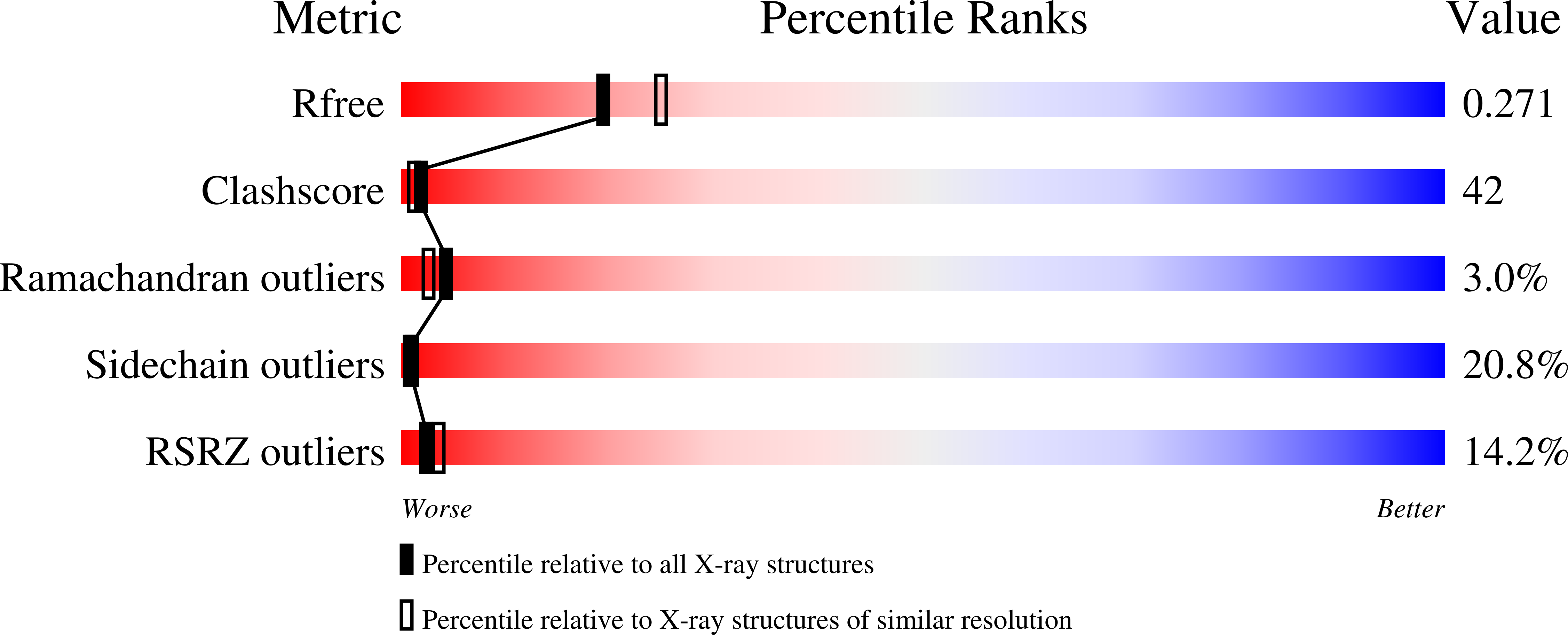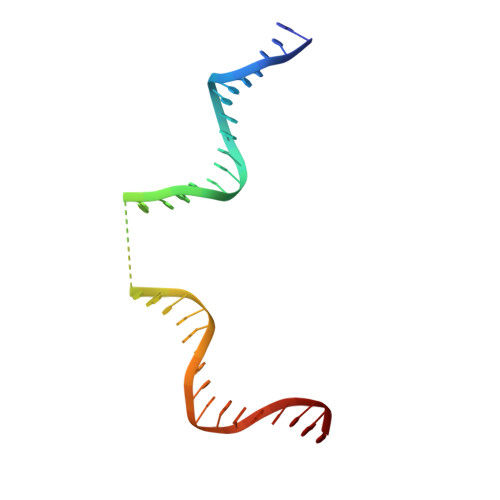Modulation of the active complex assembly and turnover rate by protein-DNA interactions in Cre-LoxP recombination
Martin, S.S., Chu, V.C., Baldwin, E.P.(2003) Biochemistry 42: 6814-6826
- PubMed: 12779336
- DOI: https://doi.org/10.1021/bi0272306
- Primary Citation of Related Structures:
1MA7 - PubMed Abstract:
Cre promotes recombination at the 34 bp LoxP sequence. Substitution of a critical C-G base pair in LoxP with an A-T base pair, to give LoxAT, reduced Cre binding in vitro and abolished recombination in vivo [Hartung, M., and Kisters-Woike, B. (1998) J. Biol. Chem. 273, 22884-22891].We demonstrated that LoxAT can be recombined in vitro. However, Cre discriminates against this substrate both before and after DNA binding. The preference for LoxP over LoxAT is the result of reduced binding and a slower turnover rate, amplified by changes in cooperativity of complex assembly. With LoxAT, similar levels of substrate turnover required 2-2.5-fold higher protein-DNA concentrations compared to LoxP, but the sigmoidal behavior of the concentration dependence was more pronounced. Further, the Cre-LoxAT complexes reacted 4-5-fold more slowly. In the 2.3 A resolution Cre-LoxAT complex structure, the major groove Arg259-guanine interaction was disrupted, explaining the reduced binding. Overall structural shifts and mobility changes indicate more favorable interactions between subunits, providing a hypothesis for the reduced turnover rate. Concomitant with the displacement of Arg259 from the DNA, adjacent charged residues Glu262 and Glu266 shifted to form salt bridges with the Arg259 guanidinium moiety. Substitution of Glu262 and Glu266 with glutamine increased Cre complex assembly efficiency and reaction rates with both LoxAT and LoxP, but diminished Cre's ability to distinguish them. The increased rate of this variant suggests that DNA substrate binding and turnover are coupled. The improved efficiency, made at some expense of sequence discrimination, may be useful for enhancing recombination in vivo.
Organizational Affiliation:
Section of Molecular and Cellular Biology, University of California, 1 Shields Avenue, Davis, California 95616, USA.
















